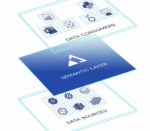
If you’re an agile team, you may still be planning, developing, testing and deploying by instinct. But what if you bring data science into the picture? Enter HPE Predictive Analytics, which can surface everything from accurate planning estimates in agile projects to efficiencies in defect detection for continuous testing.
SD Times spoke with Collin Chau, a 10-year HPE veteran based in Sunnyvale, about how HPE is applying data science to historical ALM project data. Chau, senior marketing manager for HPE ALM Octane and Predictive Analytics, explained how machine learning, anomaly detection, cluster analysis and other techniques improve the fours stages of the lifecycle.
SD Times: Where do you get data to improve ALM?
Chau: There’s metadata that sits within the ALM platform that’s untapped. If you look closely, a lot of this data can be used to accelerate quality application development lifecycle. The customers we spoke to want to get more out of that data, to use it to help guide application project teams optimize resources and reduce risk when managing the application development lifecycle.
We have an experienced team of data scientists today developing algorithms for one thing alone: quality application delivery. Data science with the absence of domain knowledge is useless information. We have data scientists sitting in application development lifecycle teams to cross-pollinate our tools with ALM-specific data science, offering users prescriptive guidance that is pertinent.
These advanced analytics are multivariate in nature, and borrow technologies specific to machine learning that continuously learn from past data — because only with a constant learning cycle that feeds on updated data that you improve and offer better recommendations and predictions.
Where do these analytics show up?
Predictive analytics is offered and sold as a “plug-in”, to be shown through the ALM Octane dashboard, which we are positioning as a data hub that will feed into other ALM tools that are on the market to offer a single source of truth.
Do you have real-world examples?
We have several customers who are participating in the technology review. Predictive Analytics for ALM will go public beta next month, and we’ll have general availability shortly.
You describe four stages of predictive analytics in ALM. What’s the first one?
The first is predictive planning. Most agile projects have no proper planning; teams start out in the dark running as fast as they can. Development time frames can get over-extended or mis-resourced. In predictive planning, the tool learns from past historical data and provides teams the recommendations in terms of user requirements, story points, and feature size estimates etc.
Next is predictive development?
For coders, the number-one job is to build quality code fast. The tool is intelligent enough to predict code that will break the build even prior to code check-in, to proactively analyze source code for defects or complexity. It can also recommend code to supplement the build – I’m pretty excited that it has the ability to continuously learn from different data points and classify it into information that developers can actually use to avoid rework.
Stage three is predictive testing — does that prevent QA from being squeezed on both ends by DevOps?
Yes. It’s about how you accelerate not just testing, but continuous testing. In this world of continuous delivery, predictive testing gets you to the next level. It helps identify root cause analysis in test failures. By so doing, it actually goes a step further by recommending a subset of tests to be done based on code changes checked-in.
Predictive analytics helps you zoom in. It says you don’t have to run a suite of 20,000 automated tests, when 100 specific ones are sufficient enough to cover the latest code commits.
The final stage is predictive operations?
We are taking real-world production data and leveraging that to tell the customers where there are test inefficiencies. The wow about this is that, because we are taking actual production data, we are infusing application development decisions with data from real-world conditions. It’s no longer lab-based or static, as applications are consistently refined to meet needs in actual operating environments.
How can teams try this on for size?
To sign up for the public beta, go to saas.hpe.com/software/predictive. Learn to optimize your resource investments and reduce risk for agile app releases within DevOps practices. Discover how predictive analytics multiplies the power of ALM Octane’s data hub as a single source of truth.






